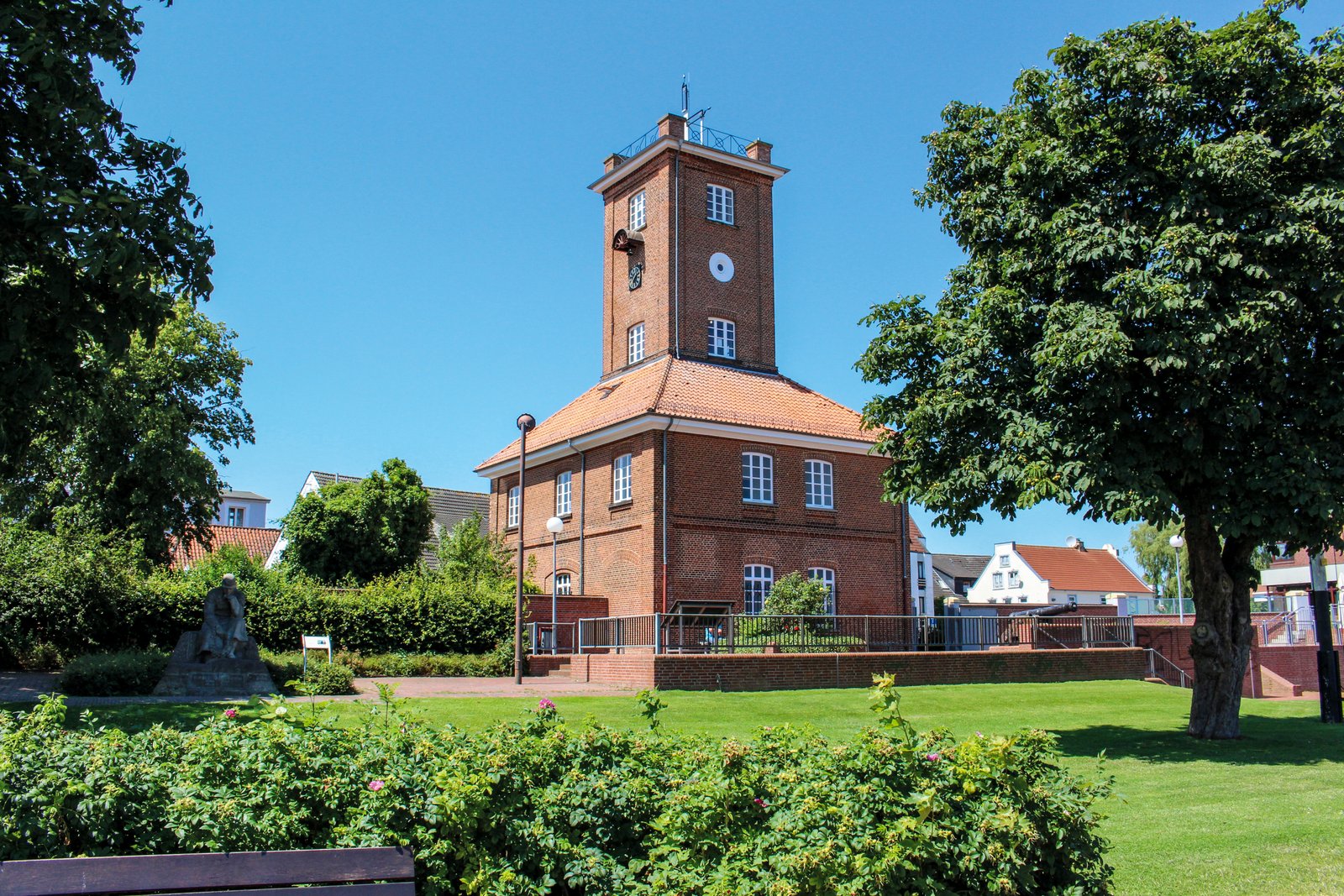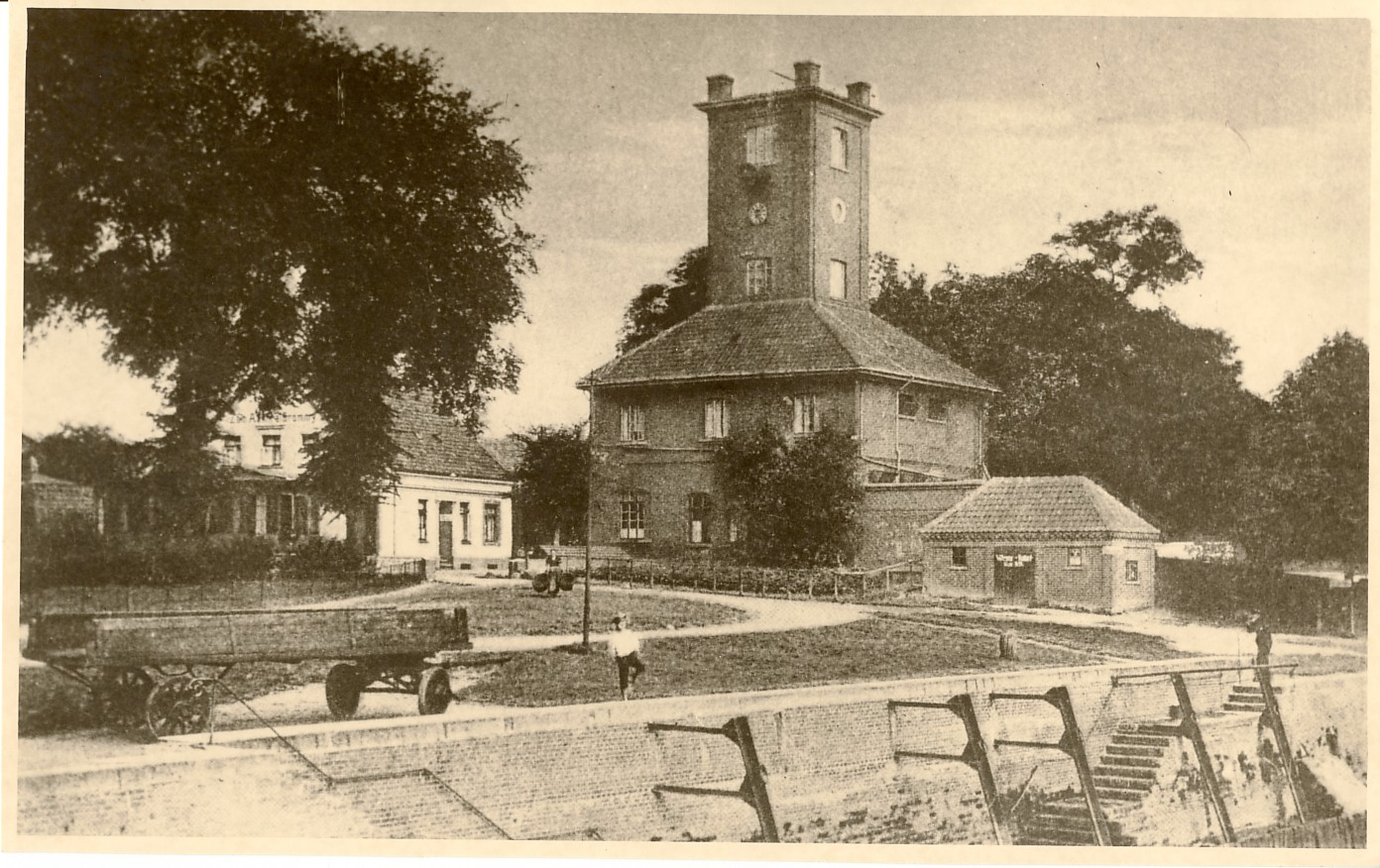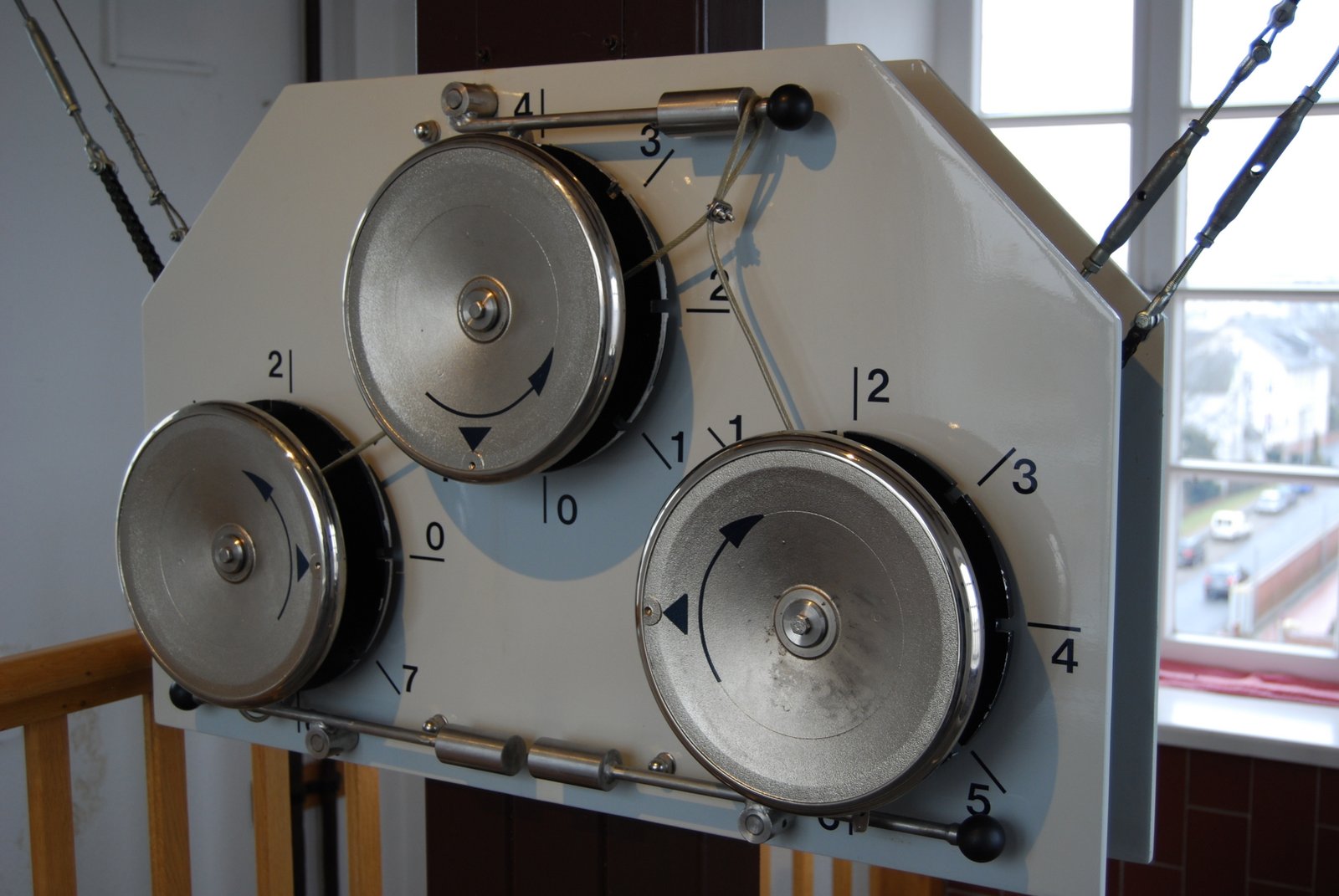
Bewerten
08fa3cef-a995-4081-901d-67ab99e9b91e|0|.0|96d5b379-7e1d-4dac-a6ba-1e50db561b04
The so-called Telegraph was built in 1846 as a station along the semaphore (optical telegraph) line between Bremen and Bremerhaven. Oldenburg´s administration financed the venture. Having a signalmast on their roofs, the merchants and shipowners were now able to conveniently relay messages between ships arriving and departing – at least during the daytime and with good visual conditions. Nonetheless, as soon as 1852, this form of communications was history. The electromagnetic telegraphy distinguished itself in terms of reliability and rapidity. The building subsequently served in various functions, including as a prison and as a firehouse. Since 1960, it has been the parent house of the Maritime Museum of the Oldenburgian Lower Weser. In 2014, following an extensive period of renovation and modernization, it was reopened.
A Building for Communications
 The Telegraph, 1920
In July of 1846, Johann Ludwig Schmidt, a merchant from Altona, began operating the Telegraph in Brake as an intermediate station of the optical telegraph line between Bremen und Bremerhaven. Messages were no able to transmitted more quickly than with the traditional post, for example, which had sometimes required up to two and a half days along the same route.
The Telegraph, 1920
In July of 1846, Johann Ludwig Schmidt, a merchant from Altona, began operating the Telegraph in Brake as an intermediate station of the optical telegraph line between Bremen und Bremerhaven. Messages were no able to transmitted more quickly than with the traditional post, for example, which had sometimes required up to two and a half days along the same route.
Privy Councillor Ernst Friedrich Otto Lasius, a construction official from Oldenburg, designed the unique, nowadays a monument, in 1845. The Telegraph was built barely a year later, containing minimal alterations made by the construction inspector Hermann Maximilian Becker of Oldenburg. In 1856, Brake was connected to the electromagnetic telegraph network and served as a station in this capacity up to 1877.
From the very beginning, the Official Incarceration Service, namely the prison, was located in the lower floors. Moreover, the tower received a face, the first official public clock in Brake. The second clock functions even today in the same location.
Telegraphic Operations
 Reconstructed controls
Reconstructed controls
Telegraph, 5th floor
Ultimately, the optical telegraph line between Bremen and Bremerhaven only enjoyed moderate success, and this was short-lived. As early as 1848, the telegraph line between Bremen, Brake and Bremerhaven was idle along certain sections. In Brake, nevertheless, no one really wanted to abandon the line. Thus, the optical telegraphic operations were subsidized for a while, although the electromagnetic telegraphy was proving to be a strong competitor. In 1850, however, the optical telegraph line between Brake and Bremen was severed. The owner Schmidt offered the telegraphs and the related buildings of the line for sale. The freight forwarder J. Müller took over operations in 1854, the merchants Claussen and Gerhard Gross jun. followed suit a year later. Even then, the confectioner Rehme continued to be responsible for sending and receiving the messages as before.
In 1856, Brake was connected to the newly established electromagnetic telegraph line via the lighthouse on the sandbank Hoheweg along the Outer Weser.
On the 1st of October 1855, Theodor Bardewyck began working for the new company. The building Telegraph served in that capacity until 1877. Thereafter, the captivating house remained in active service as a prison.
Experience the Museum
The Maritime Museum‘s Telegraph is open year-round.
Opening times are structured as follows:
1 April - 31 October
Tuesday – Saturday: 10 a.m. – 5 p.m.
1 November - 31 March
Tuesday – Saturday: 11 a.m. – 5 p.m.
Sundays and holidays: 10 a.m. – 5. p.m.
Monday: closing day
Opening hours may vary on and directly after holidays. They are also valid for "Haus Borgstede & Becker" and "Haus Elsfleth".
Maritime Museum - Telegraph, Kaje 8, 269019 Brake
Maritime Museum - "Haus Borgstede & Becker", Breite Straße 9, 269019 Brake
Maritime Museum - "Haus Elsfleth", Weserstraße 14, 26931 Elsfleth
.jpg)